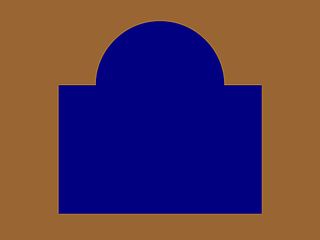Related Research Articles

The Royal Hamilton Light Infantry (Wentworth Regiment) (RHLI) is a Primary Reserve infantry regiment of the Canadian Army, based at John Weir Foote VC Armoury in Hamilton, Ontario. The RHLI is part of 31 Canadian Brigade Group, which is part of 4th Canadian Division.

The Algonquin Regiment (Northern Pioneers) is a primary reserve infantry regiment of the Canadian Army comprising two companies. A Company is located in North Bay, Ontario, and B Company is located in Timmins, Ontario. The regiment falls under the command of the 4th Canadian Division's 33 Canadian Brigade Group.

The North Saskatchewan Regiment is a Primary Reserve infantry regiment of the Canadian Army, headquartered in Saskatoon, Saskatchewan, with companies in Saskatoon and Prince Albert. Its current commanding officer is Lieutenant-Colonel Mike Graver, and the Regimental Sergeant-Major is Chief Warrant Officer Jason Balcaen. The N Sask R is part of the 3rd Canadian Division's 38 Canadian Brigade Group, with the regiment's mission task as of 2024 being to provide direct fire support.

The South Saskatchewan Regiment was an infantry regiment of the Canadian Forces formed in 1936 by the amalgamation of The Weyburn Regiment and The Saskatchewan Border Regiment. It was reduced to nil strength and placed on the Supplementary Order of Battle in 1968. They participated in the 1942 Dieppe Raid.
The 175th Battalion, CEF, was a unit in the Canadian Expeditionary Force during the First World War.
The 187th Battalion, CEF, was a unit in the Canadian Expeditionary Force during the First World War. Based in Red Deer, Alberta, the unit began recruiting during the winter of 1915/16 in that city and the surrounding district. After sailing to England in December 1916, the battalion was absorbed into the 21st Reserve Battalion on February 20, 1917. The 187th Battalion, CEF, had one officer commanding: Lieutenant-Colonel C. W. Robinson.
The 128th Battalion, CEF was a unit in the Canadian Expeditionary Force during the First World War. Based in Moose Jaw, Saskatchewan, the unit began recruiting in late 1915 in that city and the surrounding district. After sailing to England in August 1916, the battalion was absorbed into the 15th and 19th Reserve Battalions on August 24, 1916. The 128th Battalion, CEF had one officer commanding: Lieutenant-Colonel Francis Pawlett.
The 138th Battalion, CEF, was a unit in the Canadian Expeditionary Force during the First World War.
The 151st Battalion, CEF, was a unit in the Canadian Expeditionary Force during the First World War.
The 202nd (Sportsmens) Battalion, CEF was a unit in the Canadian Expeditionary Force during the First World War. Based in southside Edmonton, Alberta, the unit began recruiting during the winter of 1915/16 in that city and surrounding district. It was formally authorized on July 15, 1916. Its headquarters were in the Sheppard Block at 10316 Whyte Avenue.
The Saskatchewan Border Regiment was an infantry regiment of the Non-Permanent Active Militia of the Canadian Militia. The regiment was created in 1924 in Estevan, Saskatchewan, from the reorganization of The South Saskatchewan Regiment into five separate regiments. In 1936, The Saskatchewan Border Regiment was amalgamated with The Weyburn Regiment to re-form The South Saskatchewan Regiment.
The Peel and Dufferin Regiment was an infantry regiment of the Non-Permanent Active Militia of the Canadian Militia. First organized in 1866 as the 36th Peel Battalion of Infantry, the regiment was reorganized in 1900 as the 36th Peel Regiment. Following the First World War, the regiment was reorganized again in 1920 as The Peel Regiment and for the final time in 1923 as The Peel and Dufferin Regiment. In 1936, the regiment was Amalgamated with The Lorne Rifles (Scottish) to form The Lorne Scots.
The 1st Battalion, Canadian Mounted Rifles, CEF, was an infantry battalion of the Canadian Army. Raised for service during the First World War as part of the Canadian Expeditionary Force (CEF), it was formed in November 1914, in Brandon, Manitoba. Originally a mounted infantry unit named the 1st Regiment, Canadian Mounted Rifles, CEF, which was expanded, following its rerolling and dismounting as an infantry unit, by absorbing other units of the Canadian Mounted Rifles (CMR).

The 5th Battalion, CEF, known as "Tuxford's Dandys," was an infantry battalion of the Canadian Expeditionary Force during the Great War.

The 28th Battalion (Northwest), CEF was an infantry battalion of the Canadian Expeditionary Force during the Great War.

The 46th Battalion, CEF, was an infantry battalion of the Canadian Expeditionary Force during the Great War.
The 53rd Battalion, CEF, was an infantry battalion of the Canadian Expeditionary Force during the Great War. The 53rd Battalion was authorized on 7 November 1914 and embarked for Great Britain on 29 March 1916. It provided reinforcements for the Canadian Corps in the field until it was disbanded on 12 October 1917.
The North Saskatchewan Regiment was a short-lived infantry regiment of the Non-Permanent Active Militia of the Canadian Militia. In 1924, the regiment was reorganized and split up into 4 separate regiments.
The Saskatchewan Mounted Rifles was a cavalry regiment of the Non-Permanent Active Militia of the Canadian Militia. First formed in 1908 as the Saskatchewan Light Horse, the regiment was later redesignated that year as the 22nd Saskatchewan Light Horse and again in 1920 as The Saskatchewan Mounted Rifles. In 1911, the regiment transferred two of its squadrons to the newly formed 29th Light Horse. In 1936, the regiment was amalgamated with the 16th Canadian Light Horse to form the 16th/22nd Saskatchewan Horse.
The South Saskatchewan Regiment was a short-lived infantry regiment of the Non-Permanent Active Militia of the Canadian Militia. In 1924, the regiment was reorganized and split up into 5 separate regiments.
References
- 1 2 Government of Canada, National Defence (2004-11-09). "Volume 3, Part 2: Infantry Regiments - THE SOUTH SASKATCHEWAN REGIMENT". www.cmp-cpm.forces.gc.ca. Retrieved 2021-12-11.
- ↑ Officers' Declaration Paper
- ↑ Bykhovskaia, Anastasiia. "Dedication of the 152nd Battalion flags". Estevan Mercury. Retrieved 2019-04-24.
- ↑ Appendix to General Order No. 123 of 1929
- Meek, John F. Over the Top! The Canadian Infantry in the First World War. Orangeville, Ont.: The Author, 1971.